In a world where self-care is becoming increasingly important, the skincare industry, including the private label skincare sector, is booming. More and more people are investing time and money into their skincare routine, and there is a growing demand for high-quality, effective, and ethical products. For those looking to create a skincare line, especially a private label one, the endeavor can be both rewarding and lucrative. However, it comes with its challenges, such as developing unique formulations, establishing a strong brand identity and brand design, ensuring regulatory compliance, and executing a successful marketing strategy.
In this article, we will outline 12 key steps on how to start a skincare line successfully. Whether you are just beginning your journey or looking to expand your existing skincare business, these steps will provide a comprehensive guide to ensure your success in this competitive market.

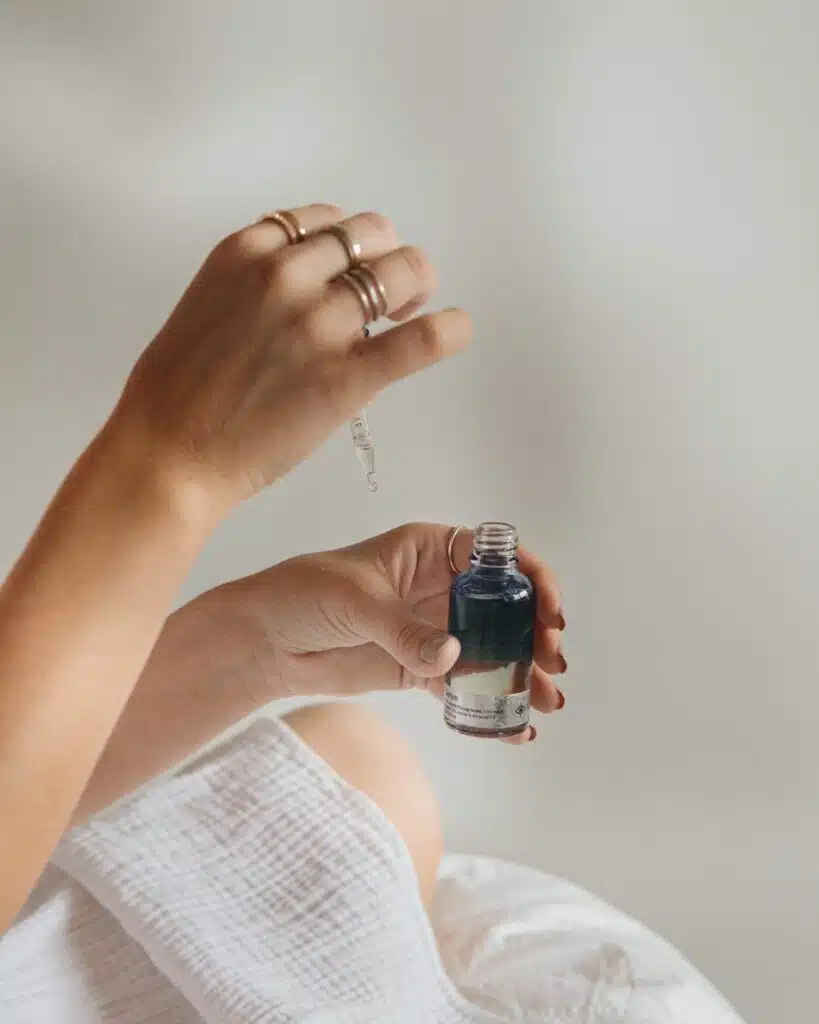
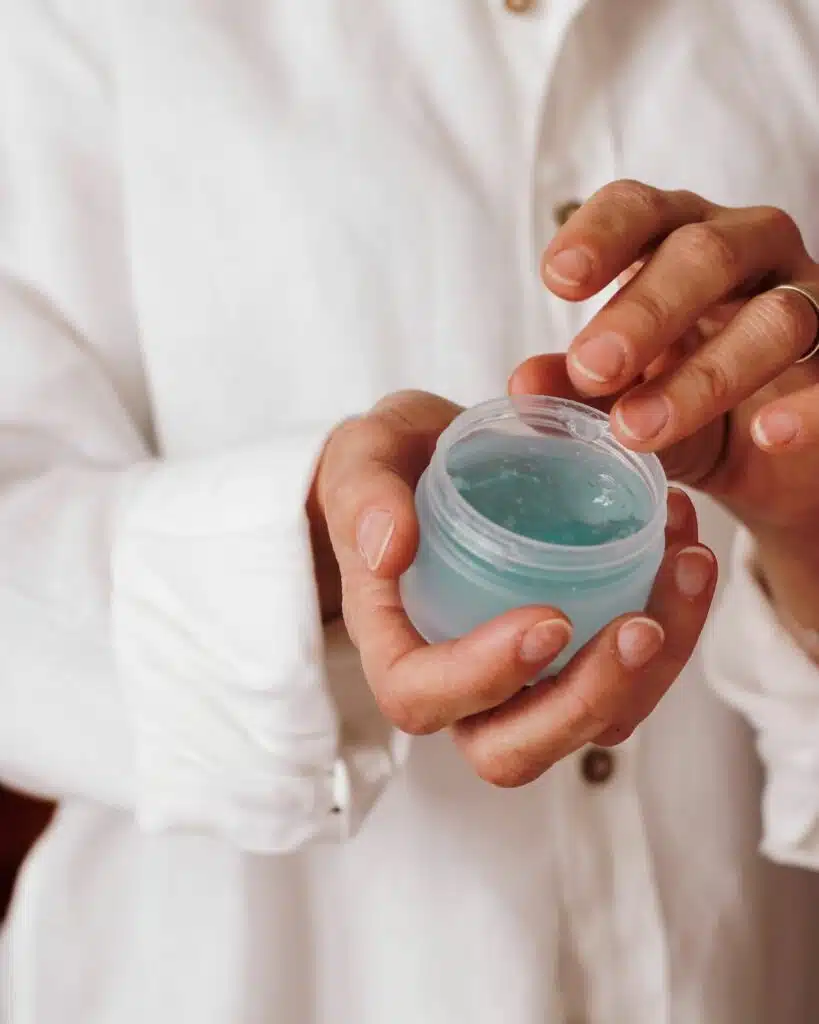
How to Start a Skincare Line in 12 Steps
Step 1: Embrace the Beginning and Push Past Fears
Starting a skincare line can be daunting, especially if you’re concerned about gaps in your knowledge. However, every successful skincare brand starts with a leap of faith. The journey from concept to launch typically spans several months to a few years, factoring in product development, testing, and branding. Don’t be discouraged by the timeline; focus instead on continuous learning and seeking guidance from industry experts. Remember, the foundation of a great skincare brand is passion, patience, and persistence. Taking that first step, despite uncertainties, is pivotal.
Step 2: Identify Your Niche and Conduct Market Research
Before diving into product creation, especially with top trending skincare products in mind, define your niche, be it anti-aging, acne-prone skin, organic skincare, or products tailored for sensitive skin. Next, study your competitors, evaluating their strengths, weaknesses, and product range, to pinpoint market gaps. Use keyword research to discern what potential customers are keenly searching for—perhaps it’s ‘vegan beauty products‘ or ‘sustainable packaging‘. Delve into your target audience’s preferences and buying habits to craft a line that resonates with their needs.
Step 3: Define Your Unique Selling Proposition (USP)
Craft a compelling, unique selling proposition that elevates your skincare brand above the rest. This isn’t just about what your products do, but how they resonate with the desires and concerns of your target market.
Maybe you focus on sourcing clean ingredients, prioritize natural elements, utilize the latest skincare methods, or address particular skin issues. Regardless of your approach, ensure you emphasize your unique selling point in every marketing effort. This clarity will help potential customers instantly recognize the distinctiveness of your products.
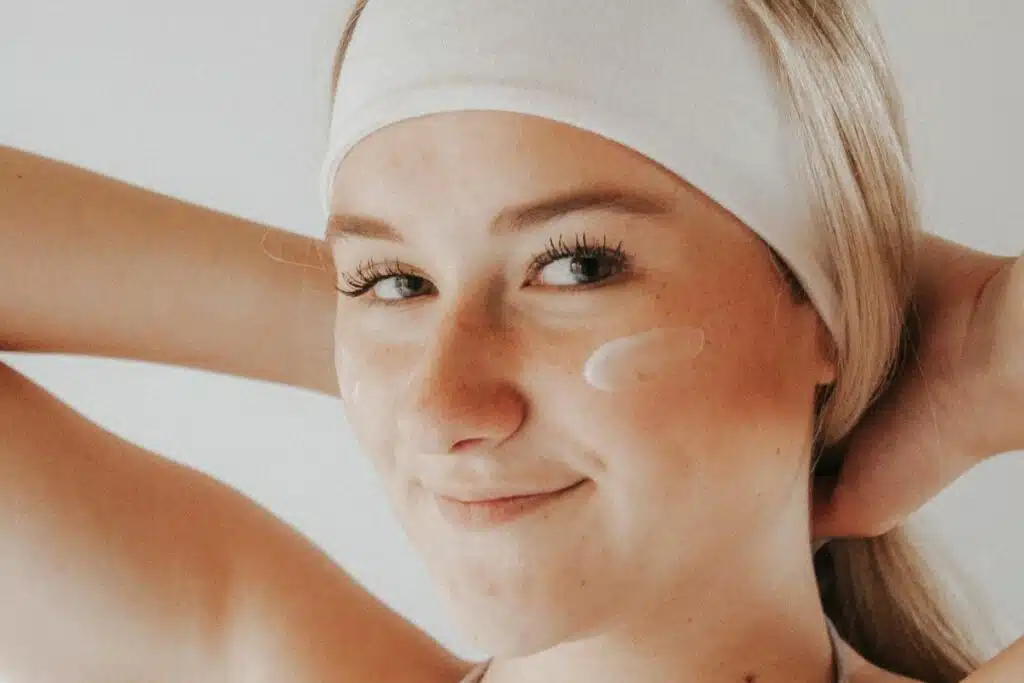
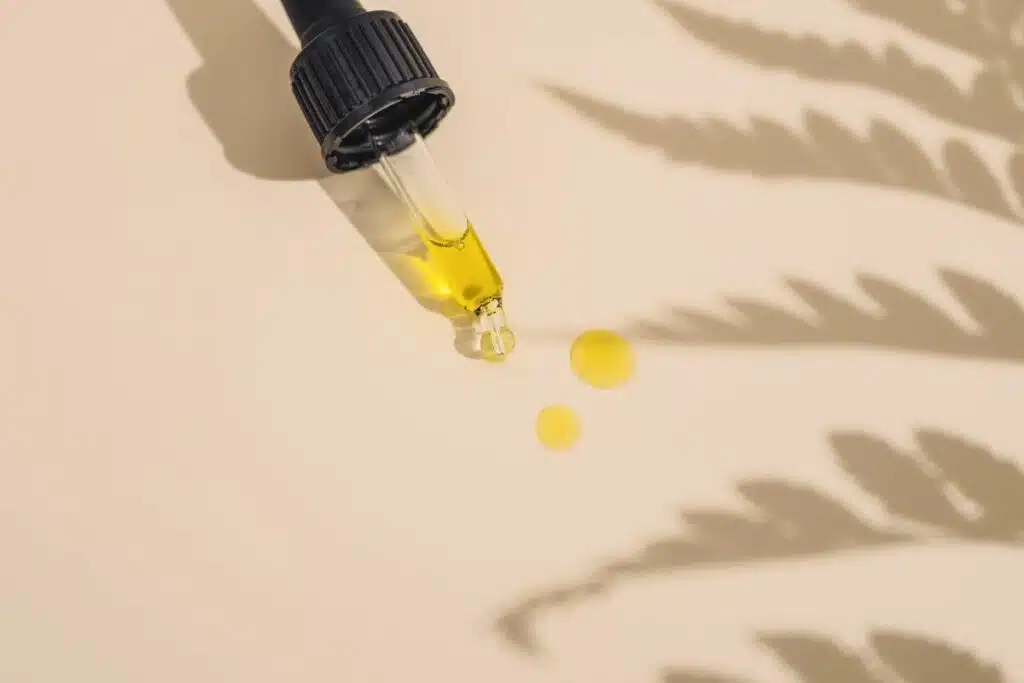
Step 4: Build a Clear Brand Identity
Create a brand that resonates and aligns with your core values. Consider elements like your brand’s name, the perfect logo design, packaging aesthetics, and the color scheme. Ensure they complement each other seamlessly. Tell a strong brand story. This story should show what you stand for and what you want to do. A good brand doesn’t just catch people’s eyes; it makes them trust you and keeps them coming back.
Step 5: Formulate High-Quality Products by Selecting the Best Ingredients
Begin your journey by partnering with seasoned skincare professionals or dependable manufacturers to create top-tier products that perfectly echo your brand’s USP. As you select each ingredient, prioritize natural ingredients known for their safety, effectiveness, and industry compliance. But the commitment doesn’t stop there. Dive deep into rigorous testing — from ensuring products remain consistent over time to guaranteeing they’re germ-free and deliver promised results. This meticulous approach to quality, at every step, positions your brand as a trusted name in the skincare market.
Step 6: Partnering with the Right Manufacturer
In understanding how to select the manufacturer for your brand, the journey with a skincare line begins with choosing the right one. Allow Wonnda’s platform to be your guide in this crucial step. Recognized as Europe’s rapidly expanding B2B hub for private label sourcing, Wonnda effortlessly connects brands with reputable suppliers, ensuring you secure the best manufacturer tailored to your brand’s needs.
Not only does our platform grant direct access to order samples, but our comprehensive software toolkit also revolutionizes your collaboration experience, making the journey from concept to reality swifter and cost-effective.
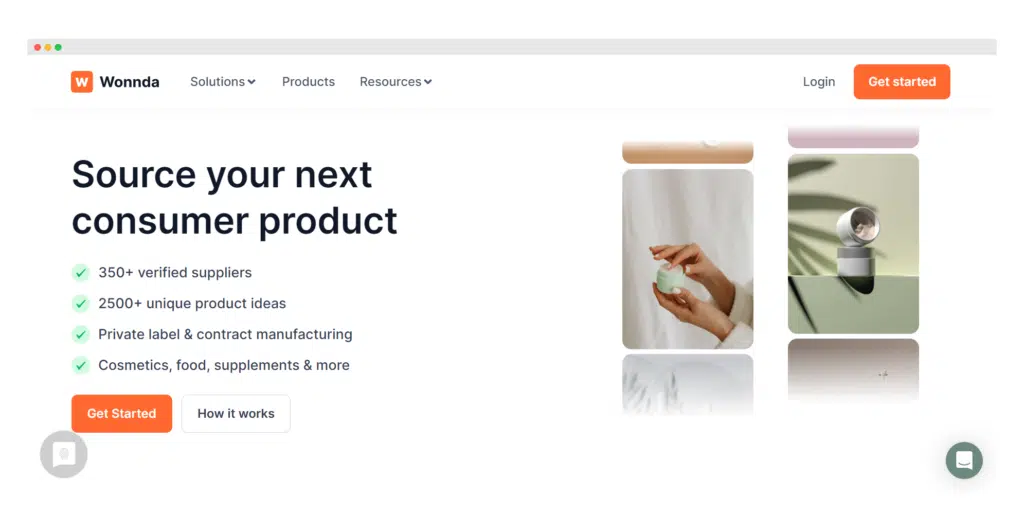
Choosing between white label vs. private label vs. wholesale? Here’s a breakdown:
White Label: Ready-made products are taken and branded with your logo. Ideal for those looking to launch quickly without the nuances of formulation customization.
Private Label: Products are exclusively formulated and tailored to your specifications, giving you greater control over ingredients and the overall product quality. Perfect for brands aiming for a unique touch in the saturated skincare market.
Wholesale: Here, you purchase products in bulk quantities, usually at discounted rates, and then resell them, potentially under your branding. This method is beneficial for those wanting to stock up on popular products without the complexities of product development.
Step 7: Order Samples and Test Your Products
Before committing to a full product line, it’s crucial to order samples from your chosen manufacturer. These samples give you a firsthand look and feel of the product, allowing you to assess its quality, texture, scent, and overall effectiveness.
Testing doesn’t stop at personal use. Share these samples with a small group, preferably encompassing your target audience, to gather feedback. This ensures your skincare product meets consumer expectations and reduces potential issues later on.
Additionally, conducting third-party lab tests can provide insights into the product’s safety, stability, and adherence to regulations. By thoroughly testing samples before mass production, you’re taking a proactive step towards ensuring the success and credibility of your skincare line.
Step 8: Play by the Rules: Ensure Regulatory Compliance
Whether you’re targeting the US, with its stringent FDA guidelines, or Europe with its detailed EU cosmetics regulations, it’s vital to know the rules inside out. Here’s how you can stay on the right side:
Educate Yourself: Dive deep into local and international skincare regulations. Knowing these will guide your product formulation and packaging.
Get the Green Light: Secure necessary certifications and licenses. This step safeguards you against unwanted legal troubles.
Stay Updated: Regulations evolve. Ensure you’re always informed about any updates or changes, so your products remain compliant.
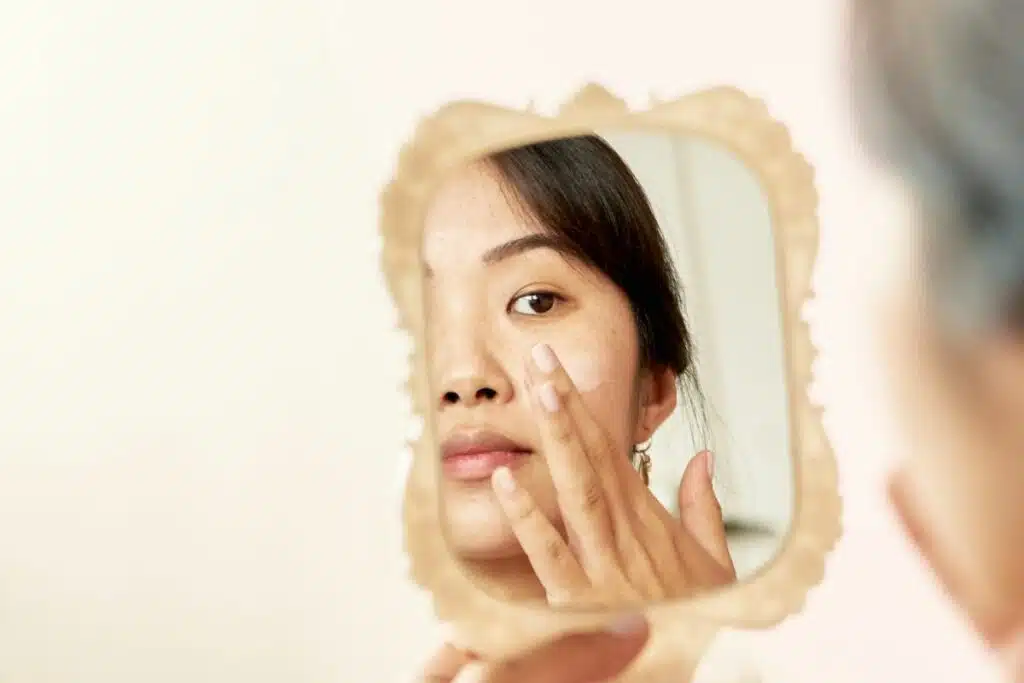
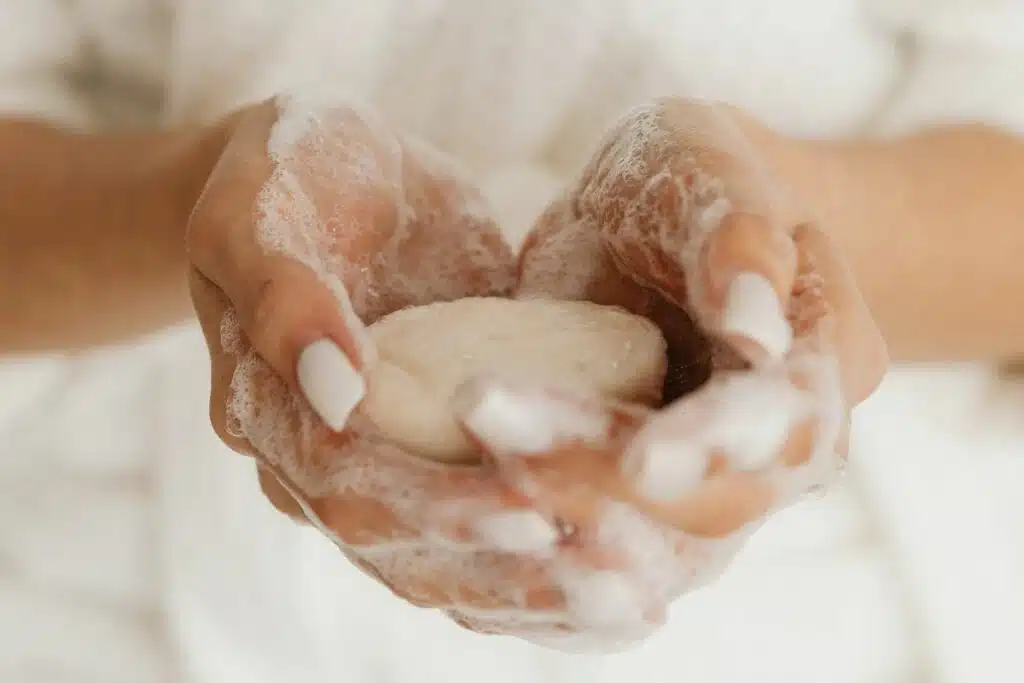
Step 9: Craft a Thoughtful Pricing Strategy
Setting the right price goes beyond numbers; it’s about aligning with your brand’s value proposition and what your audience is willing to pay. Begin by analyzing key determinants: the cost of production, including the costs to launch a private label product, your desired profit margin, and what rivals are charging. With the industry average profit margin hovering around 60%, ensure your pricing not only covers costs but also secures a healthy profit. But remember, pricing isn’t static. As the market ebbs and flows and your business matures, be ready to adjust. Striking that sweet spot between competitiveness and profitability is the key to long-term success.
Step 10: Establish a Strong Online Footprint and Craft a Winning Marketing Game Plan
Launch with a compelling e-commerce website, combining visual appeal with user-friendly navigation to entice and retain visitors. As the digital landscape shifts, prioritize mobile responsiveness, ensuring that shopping on-the-go is a breeze for your customers. SEO isn’t just a buzzword; integrate it into your website’s backbone with tailored keywords and valuable backlinks, ensuring you’re a top pick on search engine result pages.
But a great website is only half the battle. Delve deep into the marketing arena: share your brand’s narrative and product highlights on social media, use influencer marketing for genuine product endorsements, and harness the power of targeted advertising. With a unified approach to online presence and marketing, your skincare line is primed for digital success.
Step 11: Streamline Order Handling and Prioritize Customer Support
A smooth shopping journey retains customers. Implement a trustworthy order fulfillment process. Whether it’s partnering with specialized logistics companies or leveraging e-commerce platforms with built-in order management, ensure swift shipping, efficient inventory tracking, and hassle-free returns.
Your after-sales service is equally vital. Construct a responsive customer support system, addressing concerns, feedback, and returns promptly. Be accessible: from emails and phone calls to instant live chats, be there for your customers whenever and however they prefer to reach out.
Step 12: Stay Alert, Adjust, and Thrive
Consistently track your business performance, staying attuned to customer feedback, emerging industry shifts, and competitor moves. Let data guide you, refining your marketing, products, and overarching strategy. The skincare landscape is ever-changing. Embrace agility and informed decision-making to ensure you’re always ahead, paving the way for enduring success.
Expanding Your Skincare Line with Complementary Products
Once your skincare line is established and you have a loyal customer base, consider expanding your product range with complementary products. For example, if your initial product line includes cleansers and moisturizers, you might want to add serums, masks, or exfoliants.
Complementary products can help to address additional skin concerns of your existing customers and attract new customers looking for a comprehensive skincare routine. Additionally, offering a complete skincare regimen encourages customers to purchase multiple products from your brand, increasing your average order value.

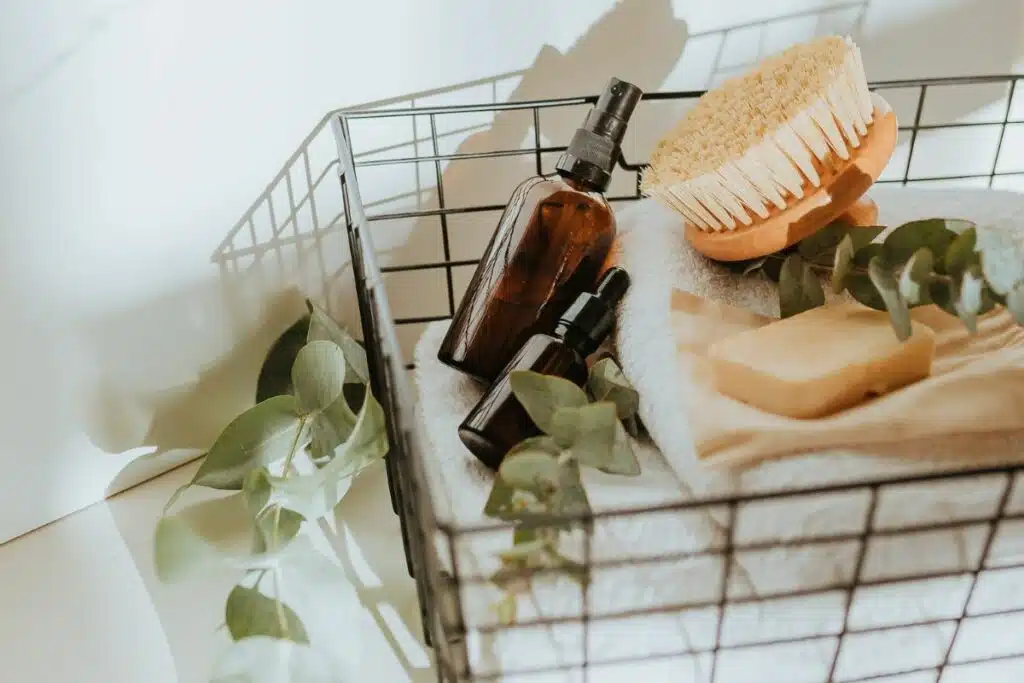
How Much Does It Cost to Start a Skincare Line?
Starting a skincare line entails costs for ingredient quality, packaging, production, and marketing. Initial investments cover product formulation, testing, branding, website, and marketing expenses. Production, storage, and distribution costs follow. A small-scale venture might require a budget of €10,000 to €20,000. However, a broader launch could range from €50,000 to €100,000 or more. A well-thought-out business plan and budget are crucial. When dealing with manufacturers, be mindful of their minimum order quantities, which could require purchasing large quantities upfront.
How Do You Price Skincare Products?
Setting the right price for skincare products involves analyzing costs, market trends, and business objectives. Begin with your direct costs, like ingredients and packaging. Add overheads, from marketing to operations. With these combined, determine a profit margin that supports growth. Compare your price range with competitors, ensuring you don’t undervalue or overprice. Ideally, your price should emphasize product quality while appealing to your target market. If your total cost is multiplied by 5 or 6, it roughly gives your retail price. For wholesale, anticipate offering discounts.
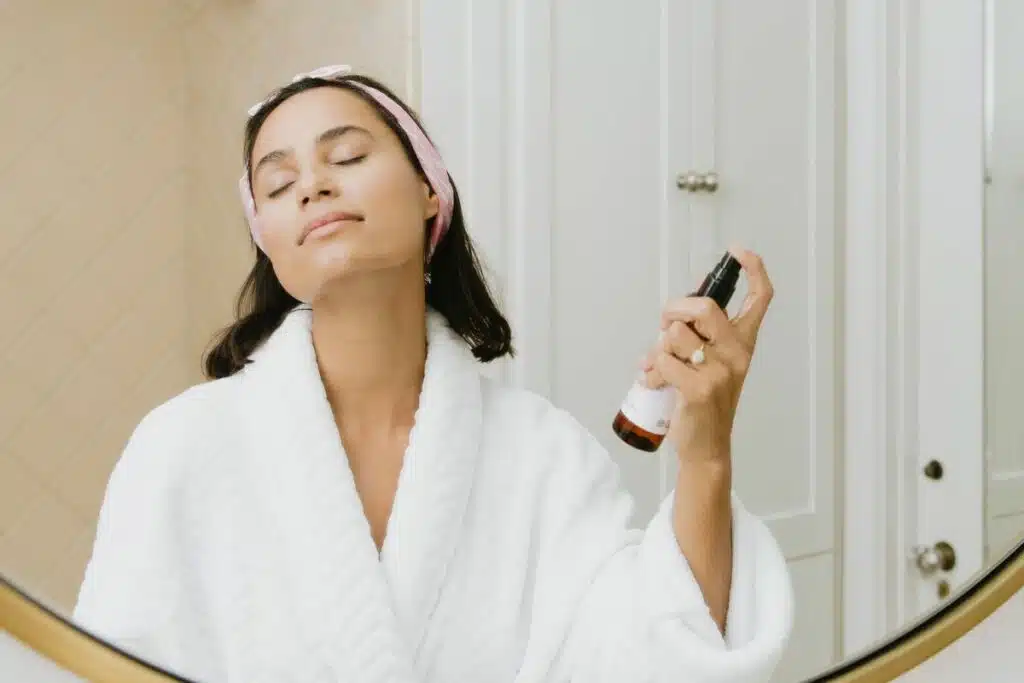
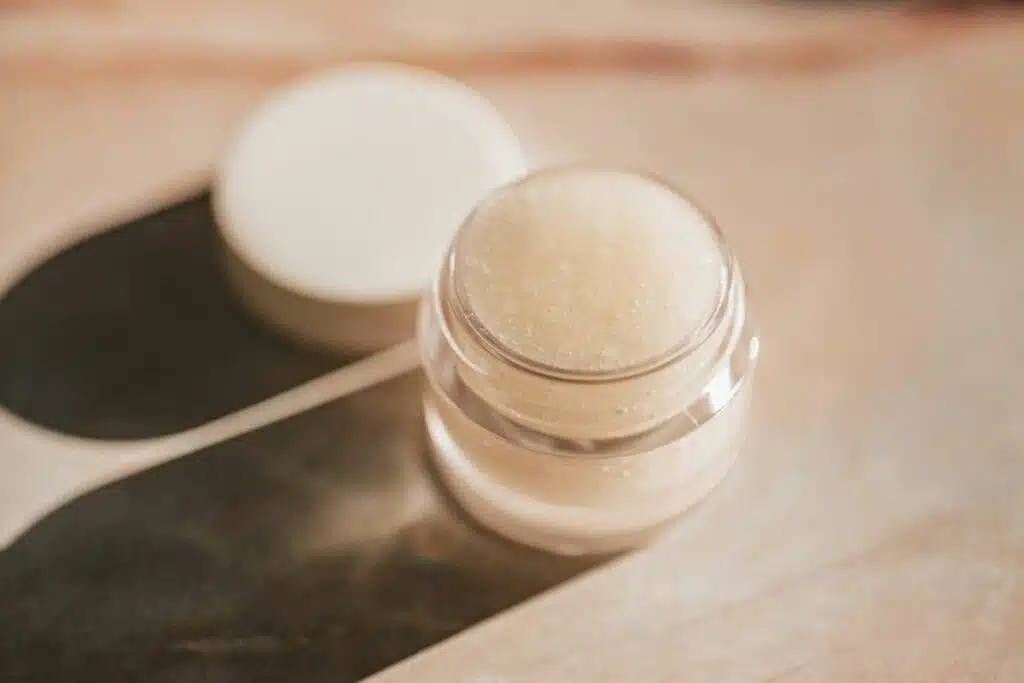
Making Your Request: Essential Elements for a Successful Manufacturer Proposal
When you are ready to approach a manufacturer with your skincare line, it’s crucial to have a well-prepared proposal that outlines all the essential elements of your product and business plan. Start by providing a brief overview of your company, your mission, and your target market. If you’re wondering how to find a manufacturer, research and networking are key. Then, detail your product specifications, including the ingredients, formulation, packaging, and labeling requirements. Include any important certifications or standards that your products must meet, such as organic, cruelty-free, or dermatologist-tested.
Next, outline your production needs, including the quantity of each product, lead times, and any special requirements such as temperature-controlled storage or shipping. Also, specify your quality control standards and any testing requirements. Finally, provide details on your budget and payment terms. A well-prepared manufacturer proposal will not only demonstrate your professionalism but also help to establish a strong working relationship with your manufacturer from the start.
Streamlining Your Skincare Product Line with Wonnda: Your European White Label and Contract Manufacturing Platform
Considering the latest skincare trends but hesitant to begin production? Whether you’re a new entrepreneur with a fresh skincare concept or an existing retailer aiming to branch out, private label or contract manufacturing could be your ticket to scaling new heights.
Enter Wonnda. We pair you with the best producers for private labeling and contract manufacturing. The key to a successful skincare launch? Finding the right production partner. With Wonnda, it’s simplified. Share your skincare vision, and we’ll match you with the optimal producers, streamlining your journey from idea to market.